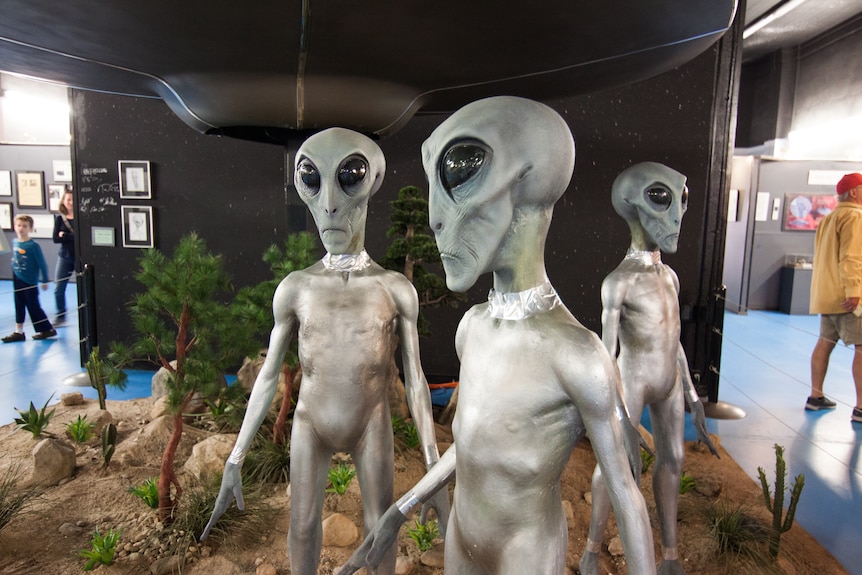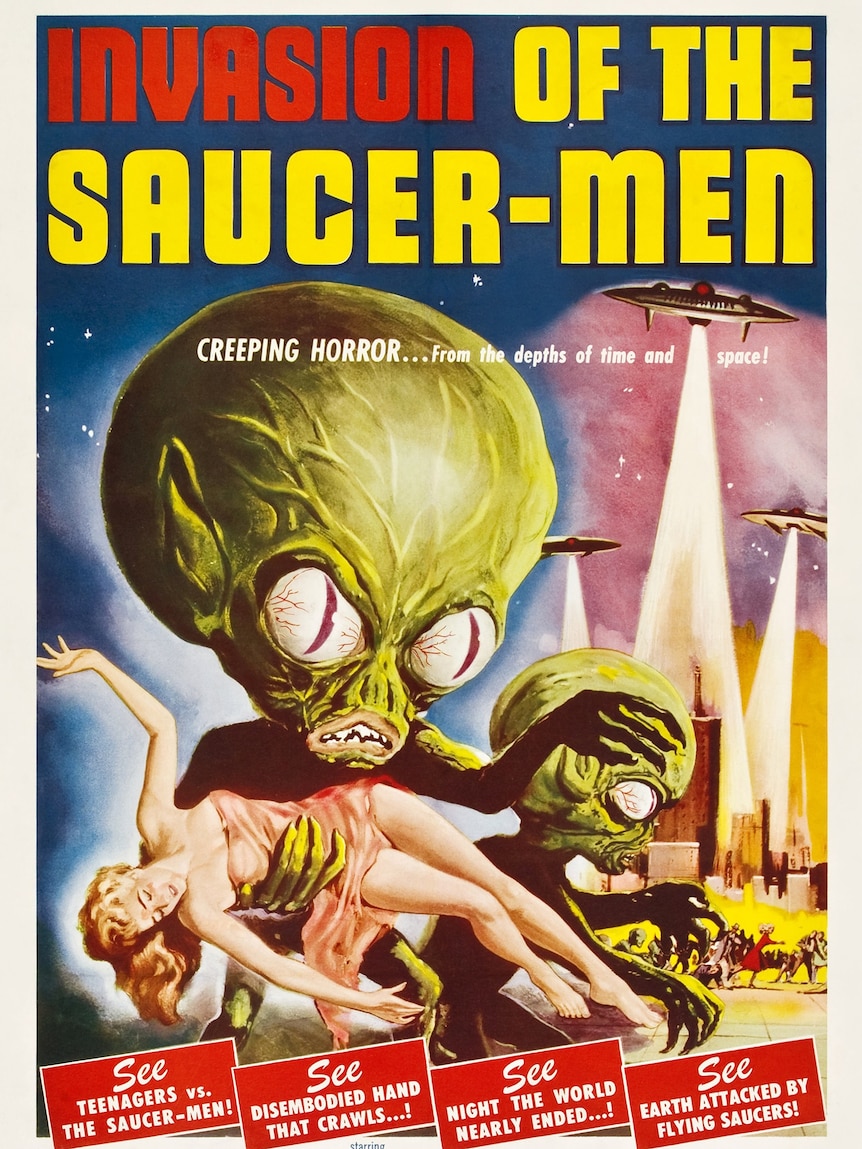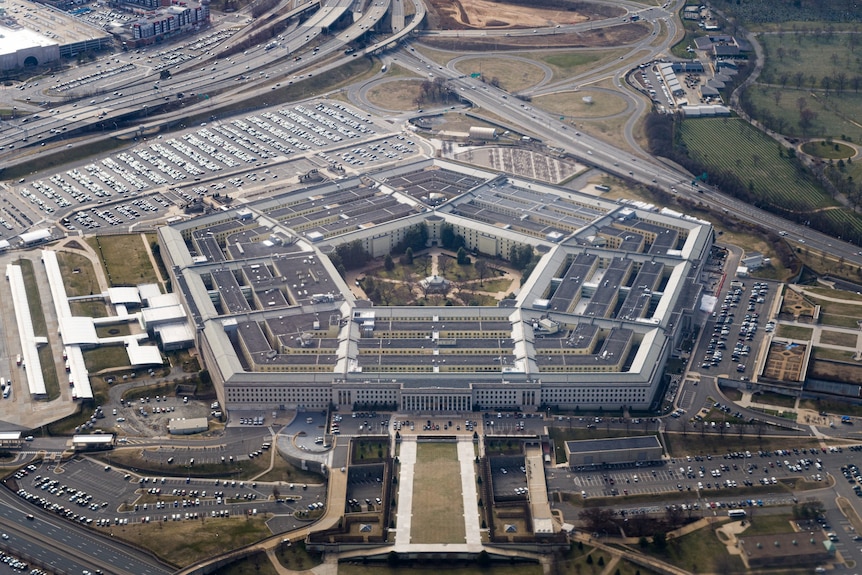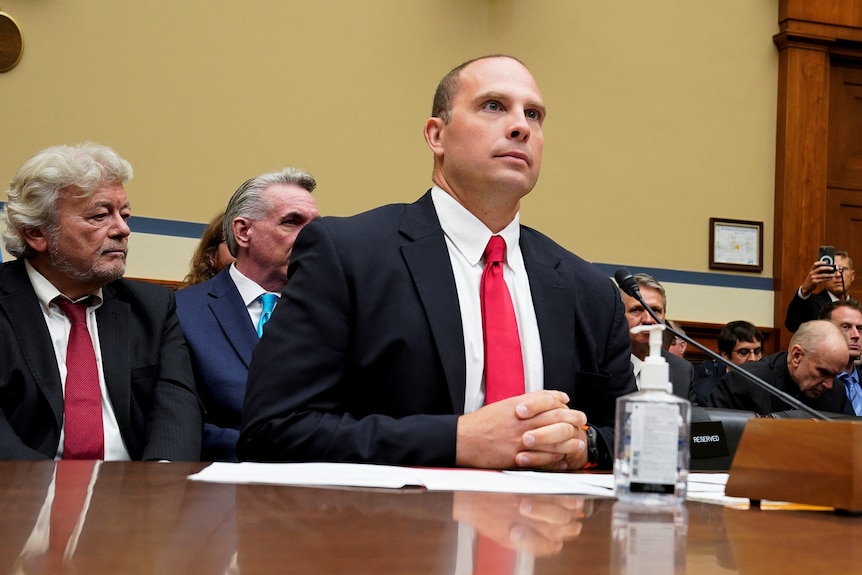‘Nothing has been the same since’: Why is the US government taking UFOs so seriously?
Are we alone in the universe?
It’s a question that humans have been asking for thousands of years, with cultures across the world long believing in life beyond the stars.
But recently, there’s been a noticeable shift as discussions about UFOs (or unidentified flying objects) and extraterrestrial life have moved from outside the mainstream to inside the corridors of power.
Since 2022, UFOs — which are now commonly called UAPs (or unidentified anomalous phenomena) — have featured in US congressional hearings, and even NASA has weighed in.
So why is this subject now being taken seriously by some politicians and scientists?
Flying saucers
The modern UFO craze started in the 1940s.
World War II had just ended and the Cold War was imminent. New weapons were being developed by rival superpowers.
In June 1947, a private pilot named Kenneth Arnold claimed that he saw strange objects flying near Mount Rainier in the US state of Washington, and reported it to authorities and the press.
A journalist asked him to describe their movement, and he likened it to how a saucer might move if you skipped it across water.
“[This] very enterprising journalist knew a headline when he heard one, and called them ‘flying saucers’, and it stuck,” Greg Eghigian, a professor of history at Pennsylvania State University, tells ABC RN’s Rear Vision.
But in modern UFO lore, this was just a curtain-raiser.
In July 1947, a rancher found some odd-looking debris near Roswell, New Mexico.

He took it to the sheriff, who passed it onto the nearby Roswell Army Air Field base. Those at the base initially said it was a “flying disc”, but the official line was then clarified and it was said that it was a weather balloon.
Confusion and fascination ensued.
The object was actually a “high-altitude surveillance balloon to look for Soviet nuclear tests in the atmosphere … [which] was a secret program”, says Chris Impey, a university distinguished professor of astronomy at the University of Arizona.
“[But] this military officer [said] ‘oh it’s a flying saucer’ and of course, then it’s off to the races and now you have Roswell as the ground zero for UFOs.”
US government concerns
Behind growing public excitement and fear about UFOs, the US government had some serious questions.
“There was this concern that American airspace was being trespassed [by a foreign adversary],” Professor Eghigian says.
From the 1940s until the 1960s, a series of US government programs were set up “to see whether or not this stuff represents a threat”, he says.
By the time the final project ended in 1969, it had collected over 12,000 UFO reports. And while most of these were able to be explained, 701 of the reports were classified as “unidentified”.
“[But] all of these projects came to the conclusion … that there is no evidence that these things represent any kind of national security threat,” Professor Eghigian says.
Aliens!
As the US government was looking into UFO sightings, some members of the public became convinced they were evidence of extraterrestrial life.

Professor Eghigian says the work of author and former naval aviator Donald Keyhoe in the 1950s helped kick off the modern alien craze.
“Basically [Keyhoe wrote] that the conclusion that a lot of experts are reaching is that the only thing that could explain this phenomenon [of sightings] are extraterrestrials.”
UFOs then took on an even more public dimension in the 1960s and 1970s.
There were alleged alien encounters, like the story of Betty and Barney Hill, who claimed to have been abducted in New Hampshire in 1961.
Even former US President Jimmy Carter claimed to have seen UFOs.
A secret government program
By the early 1990s, the Cold War was over. Fears of high-tech global conflicts dissipated and, with them, the UFO craze.
But there was one big exception: A US senator from Nevada named Harry Reid, who had “a fairly long-standing interest in things that were paranormal”, Professor Eghigian says.
From 2007 to 2012, Mr Reid helped funnel millions of dollars in government funding into a secretive Pentagon project called the Advanced Aerospace Threat Identification Program, to look into UFOs.
And, in 2017, it all came out and into the public eye.

The New York Times reported on “the Pentagon’s mysterious UFO program”, and featured video footage of unknown objects travelling in the sky.
“Up until that point, everybody had assumed that our government really wasn’t engaged with this. Or if they were, it was very, very secret, and that we’d never find out about it,” says Leslie Kean, one of the journalists who worked on the story.
Critically, the existence of this program was not proof of extraterrestrials or that aliens have visited Earth.
Instead, it showed the US government was taking the matter of unidentified objects seriously and was trying to work out what the objects were.
Loading…
“[But] nothing has been the same since — [the story] radically changed the landscape,” Ms Kean says.
“Legislation was passed requiring that the intelligence community provide reports on this; they set up a task force to investigate UFOs,” she says.
“It just kept building and building, and as of today, there have been three open congressional hearings dealing with this.”
Notably, ever since then, US officials have been using the term UAP, a broader term and one which doesn’t have the same baggage as “UFO”.
Intact crafts and ‘pilots’?
In 2023, David Grusch, who worked with the US’s National Geospatial-Intelligence Agency and the National Reconnaissance Office, and who had been involved with UAP investigations, went public.
He was “a very highly respected intelligence official [who became] a whistleblower”, Ms Kean says.

Mr Grusch spoke with Ms Kean in an article that included several big claims.
“He believed, based on what up to about 40 people told him, who are directly involved with this, that the [US] government had in its possession intact crafts and also partial crafts that had crashed or had been retrieved that were not made by human beings,” Ms Kean says.
In sworn testimony to US Congress, he repeated some of his claims, including how he heard that there was “non-human” biological matter from the pilots of these crafts.
“It shifted the conversation from one where government officials were talking about UFOs … to one in which a government official was talking about UFOs and saying it’s aliens,” says Shane Harris, the intelligence and national security reporter at the Washington Post.
“[But] a number of lawmakers, I think, found this to be problematic,” Mr Harris says, because his information was all second-hand.
The Pentagon has denied the claims.
Meanwhile, NASA has started to do its own investigations into UAPs and it released a report in September.
But those hoping for proof of other life forms would have been disappointed.
“We didn’t learn very much. They definitely said we find no evidence of aliens visiting,” Professor Impey says.
He says for many UAP sightings, NASA simply said the data was “not good enough” to make conclusions.
‘Sit back and watch’
For Professor Eghigian, the renewed interest in UAPs is unsurprising.
Firstly, there have been huge developments in technology in recent years which make it easier for militaries and intelligence services “to detect unusual aerial activities that they might have missed in an earlier age”.
“[Also] we’ve got to remember that the UFO phenomenon has always thrived in any environment where questions are being raised about: ‘Can we trust our authorities?'” he says.
“And of course, the pandemic did just that. It fed this widespread sense of uncertainty, a sense of powerlessness.”
He says this environment helped “fuel some of those more dubious” voices within the “UFO-curious world”.
But after the recent flurry of UAP excitement, Ms Kean is one of many who believes that the truth is out there.
“There are a lot of efforts underway to try to get to the bottom of this. And I just think we can sit back and watch. Hopefully, we’re on a train that’s not stopping.”
RN in your inbox
Get more stories that go beyond the news cycle with our weekly newsletter.


